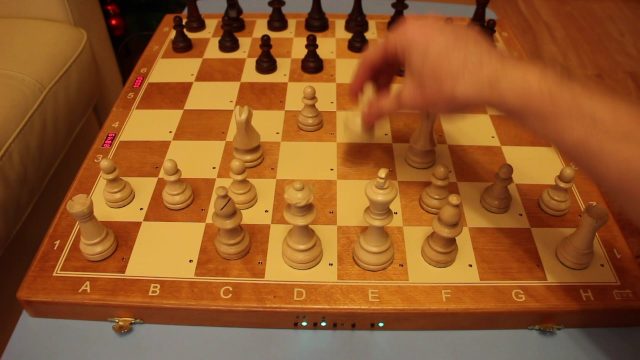If you want to learn chess, it is important to learn basic rules using cool chess board. That is why we explain these laws in an easy-to-understand way. We should explain everything in this chess rules section from the initial board to the movements of each piece.
You need to learn how to move the pieces (legally) before you can play a chess game. The strength of a chess piece is tied to its versatility. The more mobile a part is, the better it is:
Pawns: Pawns can just move forward. They can move one or two squares on their first move. We will only move one square at a time either. You will capture an enemy piece by diagonally pushing a square forward.
Bishops: Bishops can diagonally move any number of places.
Knights: Knights may either move in a L configuration, one square up, one square up, two squares up, or two squares down, or a combination of one or two moves down in either direction.
Rooks: Rooks can move a variety of squares side by side, up and down.
Queens: Queens can move all squares by lines, files and diagonals.
Kings: Kings can move anywhere in one square at a time.
Chess history
It is believed that Chess was invented 1500 years ago in India. The system has improved just a bit since the arrival of the Queen in the 15th century and slight improvements in the 1800s.
Aim of Chess Game
The key objective in playing chess is to place a checkmate, to capture the enemy’s king. Checkmate is a variation of the Persian term “Shah Mat,” which literally “the king’s beaten,” and “the king’s not dead,” a common confusion.
Broad Chess rules
White is usually the first player and the opposing player moves a piece by a moment. Movements are significant. If the opponent’s action moves, it doesn’t have any legal changes, this state is considered a ‘Stalemate,’ and the game ends in a draw. Every type of product has its own motion mechanism.
The first place setup
The board consists of eight rows and eight columns for a total of 64 color squares. Each squeegee boards contain a single pair of letters and numbers; the vertical files are numbered hover, from White on the left (that is, the queen) to White on the right, likewise, the horizontal ranks are numbered from 1 to 8 on the next side of BlackBoard. Increasing board square is then numbered from 1 to 8.
Chess is going
The king can move precisely one square vertically or diagonally. — King is allowed to make a special move known as the castle at best once in any game.
Queen can move any number of empty squares diagonally, horizontally or vertically. The rook can move any number of empty squares vertically or horizontally. This is often moved during casting.
Understand the Castling
Castling is the only moment in the chess game that more than one piece takes a turn. This chess move was created in the 1500s to escalate the game and improve the balance of attack and defense. The king in the castle put two squares to the rock where he intended to create, and the rook went to the spot where the king moved. Also if any of the following conditions apply is casting permitted:
None of the King or the castling rook should have advanced from the initial position;
There must be no pieces between the king and the rook;
The king should not be tested, but the king should cross or finish in an enemy square (although the rook can be invaded and pushed on an assaulted square)
Promotion of the pawn
When cotton reaches the bottom of a bowl, it is advanced – if the player desires, the cotton may be turned into a queen, a king, a bishop or a cook. The option is not only pre-captured parts. We can then have up to nine queens or 10 rooks, knights or cavalry if the two pawns are advanced.
Test the middle
During a chess game, managing the middle and centralizing the pieces are crucial targets. The components generally increase power when they are centralized. During the opening process, you want to make a minimal effort to optimize the power of the pieces. Putting one piece on the best square three times does not help if the other pieces, however, languish on their initial squares.
Track the opponent
Just as critical as rapid growth is stopping the growth of your competitor. Some strange movements can only be explained in this way. If you waste two movements to push your opponent to waste three, well, after all, those movements have not been wasted!
Table of Contents






![How to Win Over Customers With a Mobile Development Strategy [pii_email_4349dab0e0760840840a]](https://www.techiemag.net/wp-content/uploads/2020/06/Mobile-App-100x75.jpeg)

